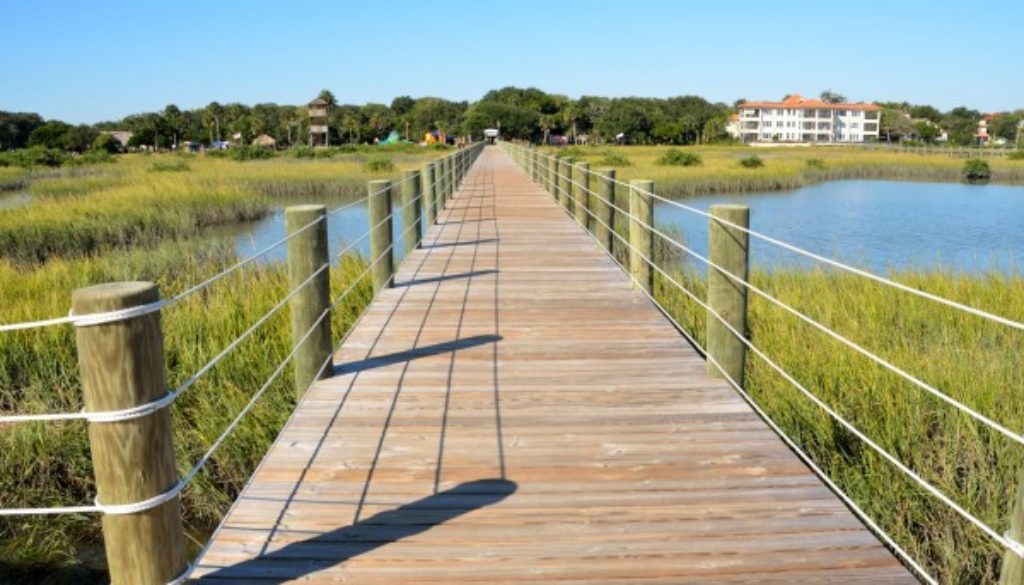America’s Wetlands: Vital, Ignored and Now Defined Away by the Trump Administration
By Genna Reed, Union of Concerned Scientists
Last week, the Trump administration finalized its rollback of the expanded definition of the waters of the United States. Now fewer water bodies, including wetlands and ephemeral streams, will be protected under the Clean Water Act. The quality of more than half of the country’s wetlands and 18 percent of its streams is now in peril.
This move goes against established science and flies in the face of hydrogeology. Even the EPA’s own advisors wrote in a draft report that, “The departure of the proposed rule from EPA-recognized science threatens to weaken protection of the nation’s waters by disregarding the established connectivity of groundwaters and by failing to protect ephemeral streams and wetlands which connect to navigable waters below the surface…These changes are proposed without a fully supportable scientific basis, while potentially introducing substantial new risks to human and environmental health.”
What my time at the EPA taught me about the Clean Water Act
In my master’s thesis published in 2010, I wrote about the need to strengthen, not weaken, protections for wetlands under the Clean Water Act and to give the EPA more power, not less, to ensure that wetlands were preserved.
While finishing my degree, I was a fellow at the EPA Region 3 office that dealt with enforcement of section 404 of the Clean Water Act. I spent months learning from agency scientists who understood the value of streams and wetlands and worked tirelessly to ensure they were using evidence to meet the EPA’s statutory obligation to “restore and maintain the chemical, physical, and biological integrity of the nation’s waters.”
I worked with these scientists to understand the best ways to measure the functional integrity of streams and wetlands, and to ensure that monitoring done by state and federal governments captured the quality of these water bodies accurately. Functional integrity is not just about ensuring that the wetland or stream in question is physically present but that the entire system of all of its interrelated parts are completing their respective ecological processes.
My time at the EPA showed me how important laws like the Clean Water Act are for protecting public resources, like our surface and ground waters, because without them and the staffers implementing them, the environment is powerless against polluters and developers. Environmental statutes help level the playing field.
I was heartened to see that 44 former and current EPA employees of regional offices and headquarters (including wetlands expert Charles Rhodes, Jr. from Region 3) submitted a scientific integrity inquiry this week to the EPA Inspector General claiming that in promulgating this rule, the EPA ignored established and accepted science violated its own policy.
What the Trump administration ignores
What the Trump administration actively ignores in its decision is that wetlands provide multitudes of public benefits, whether or not they have uninterrupted surface water connection. The complex ecological system of which water bodies are a part isn’t made up of visible, clean, connected lines.
The system is open and in flux and decisions need to take that complexity into consideration. For example, there are certain amphibian species in isolated wetlands in the “Carolina Bays” of South Carolina whose life cycles depend on the wetlands’ presence and functional integrity. The Prairie Pothole region at the northern border of the Great Plains and Canada supports significant populations of ducks and geese. And ephemeral or intermittent headwater streams can provide predator-free opportunities for a variety of species to mate and enjoy less competition.
Last year, President Trump told farmers that the previous definition of Waters of the US, “basically took your property away from you.” But that is far from the truth. The Clean Water Act doesn’t put farmers and industry out of business, it puts in place safeguards so our resources aren’t depleted and polluted to the point of no return. Farmers, of all people, understand the benefits wetlands providefor land use including improved water quality, reduced flooding and erosion, and beneficial species like pollinators and pest-controlling insects.
Wetlands are worth protecting
As we face a climate emergency, our government should be doing more to preserve wetlands, which are a natural buffer against rising seas and destructive storms. Instead, it is doing us all a disservice by shifting the balance that the Clean Water Act and the Obama administration’s definition of waters attempted to restore.
Other administration decisions, like removing the requirement to consider cumulative and indirect effects (like climate change) in National Environmental Protection Act (NEPA) assessments will surely mean even less consideration of the value of wetlands in development decisions. A one-two punch right in the environment’s kidneys.
Like kidneys to humans, wetlands are vital to the ecological system. We can’t afford to find out what continued loss and degradation will do these critical parts of the water system. I am certain that this action will be challenged in the courts, and luckily for wetlands and streams and the flora and fauna depending on them, science is on their side.

